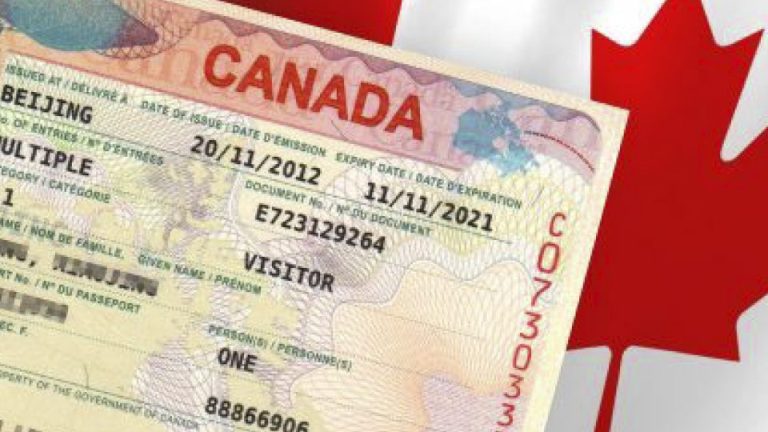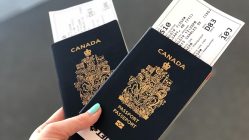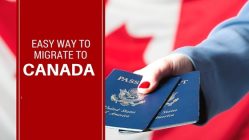Have you ever thought of what it really takes to go to Canada? Not just dreaming about it, but actually making the move—whether it’s for school, work, travel, or starting a new life? If so, you’re not alone. Thousands of people from around the world set their sights on Canada every year, and for good reasons. It’s a beautiful country, full of opportunities, and known for welcoming people from all backgrounds. But before you pack your bags or start telling your friends about your big move, there’s one big thing you have to get right: the visa.
Now, this is where many people get confused. There’s not just one Canada visa. In fact, there are several types and categories of Canada visas, and each serves a specific purpose. Some are for short visits. Others are for permanent relocation. Some let you work or study, and others don’t. Applying for the wrong one could lead to delays—or worse, rejection. So, if you’re serious about going to Canada, understanding the different visa options is your first real step. That’s exactly what this article will help you with.
Let’s walk through the various types of Canadian visas in a way that’s easy to understand—no complex legal terms, no much instructions, just clear and simple guide.
Types of Canada Visas
Visas for Canada are mainly split into two big categories: Temporary Resident Visas (TRVs) and Permanent Resident Visas (PRVs). Think of TRVs as short-term entry passes and PRVs as long-term permits for those who want to settle and live permanently in the country.
Temporary Resident Visas (TRVs)
Temporary visas are for people who plan to stay in Canada for a limited period. Maybe you’re going for a few weeks or months—whatever the case, this type of visa suits short visits for work, study, business, or tourism. Once it expires, you’ll be expected to leave unless you apply for an extension or change your status.
Student Visa
If you’ve been accepted into a Canadian educational institution, like a college or university, you’ll need a student visa (often called a study permit). This visa allows you to live in Canada for the duration of your course. You may also be allowed to work part-time while studying, and full-time during breaks. The great thing is, after your studies, you can apply for a Post-Graduation Work Permit (PGWP), which may even lead to permanent residency down the line.
Canada is one of the top choices for international students, not just for its quality education, but also because of the opportunities available after graduation.
Visitor Visa
A visitor visa—sometimes called a tourist visa—is for people who want to travel to Canada temporarily. Maybe it’s to explore the country, visit family or friends, or just take a break. This visa doesn’t allow you to work or study. It’s strictly for short stays.
Most visitor visas let you stay up to six months. You’ll need to prove that you can support yourself financially during your visit and that you’ll return to your home country afterward.
Business Visa
If your trip to Canada is related to business—like attending meetings, conferences, trade fairs, or checking out investment opportunities—then the business visa is the right choice. It’s not meant for people who plan to take up a job in Canada, but rather for those coming in to handle business activities on a short-term basis. You’ll need to show that you have a business purpose and financial means to support your stay.
Work Permit (with a Job Offer)
Canada is always looking for skilled workers, and if you’ve landed a job with a Canadian employer, you can apply for a work permit. This type of visa lets you work legally in the country for a specific employer, in a specific role.
Most employers need to get a Labour Market Impact Assessment (LMIA) to prove that no Canadian worker is available to do the job. Work permits are usually temporary, but in many cases, they can be a stepping stone to permanent residency—especially if you gain valuable Canadian work experience.
Permanent Resident Visas (PRVs)
Now let’s talk about the long-term options. Permanent resident visas are for those who want to make Canada their new home. With this visa, you can live, work, and study in Canada indefinitely and even apply for citizenship after a few years.
Express Entry
This is one of the most well-known and fastest routes to becoming a permanent resident of Canada. Express Entry is a system used by the government to manage applications for skilled workers. It includes three programs: the Federal Skilled Worker Program, the Federal Skilled Trades Program, and the Canadian Experience Class. You’ll be ranked based on a point system called the Comprehensive Ranking System (CRS), which considers your age, education, language ability, work experience, and more. The higher your score, the better your chances of getting an invitation to apply.
Provincial Nominee Programs (PNPs)
Canada’s provinces and territories have their own immigration programs, designed to meet their local labor needs. If a province believes you can contribute to its economy, it can nominate you through a Provincial Nominee Program.
Some PNPs are aligned with Express Entry, which means you could get a higher CRS score if you’re nominated. If you already know where in Canada you’d like to live, PNPs can be a good path to consider.
Start-Up Visa Program
Are you an entrepreneur with a business idea that could succeed in Canada? The Start-Up Visa Program could be your path. It’s for people who want to build an innovative business that creates jobs for Canadians and can compete globally.
To qualify for startup visa, you’ll need support from a designated organization in Canada, like a venture capital group or a business incubator. If approved, you can move to Canada as a permanent resident along with your family.
Family Sponsorship
Canada values family, and that’s why it allows citizens and permanent residents to sponsor their loved ones. If you have a close relative living in Canada—like a spouse, parent, child, or even grandparent—they may be able to bring you over through family sponsorship.
The sponsor must prove they can support you financially and take responsibility for you during your initial years in Canada.
Common Requirements for Canadian Visas
Now let’s look at what you need to get these visas. While each visa type has its own unique requirements, there are a few things that are commonly needed across the board:
- A valid passport
- Proof of financial support (bank statements, sponsor letters, etc.)
- A clean criminal record (police clearance)
- A medical exam (especially for long-term visas
- Biometrics (fingerprints and a photo)
- Completed application forms and the correct fees
- A clear reason for your visit or move (e.g., admission letter, job offer, invitation letter)
Accuracy matters. If you provide false or incomplete information, your application could be denied, and you might even be banned from applying again for several years.
Last Notes
Though it might be tough to know the types and categories of Canada visas, nonetheless once you break it down, it becomes more simple. That’s what we did in this article.
There are several reasons for you going to Canada: is it for few weeks, several years, or planning to stay permanently. I can assure you there’s a visa type that fits your goal. From studying and working to reuniting with family or starting a business, Canada has created paths for people from all walks of life.
However the key is to choose the right visa, meet the requirements, and submit a strong application. If you’re serious about making Canada part of your future, take that next step with confidence—your journey starts with the right visa.






